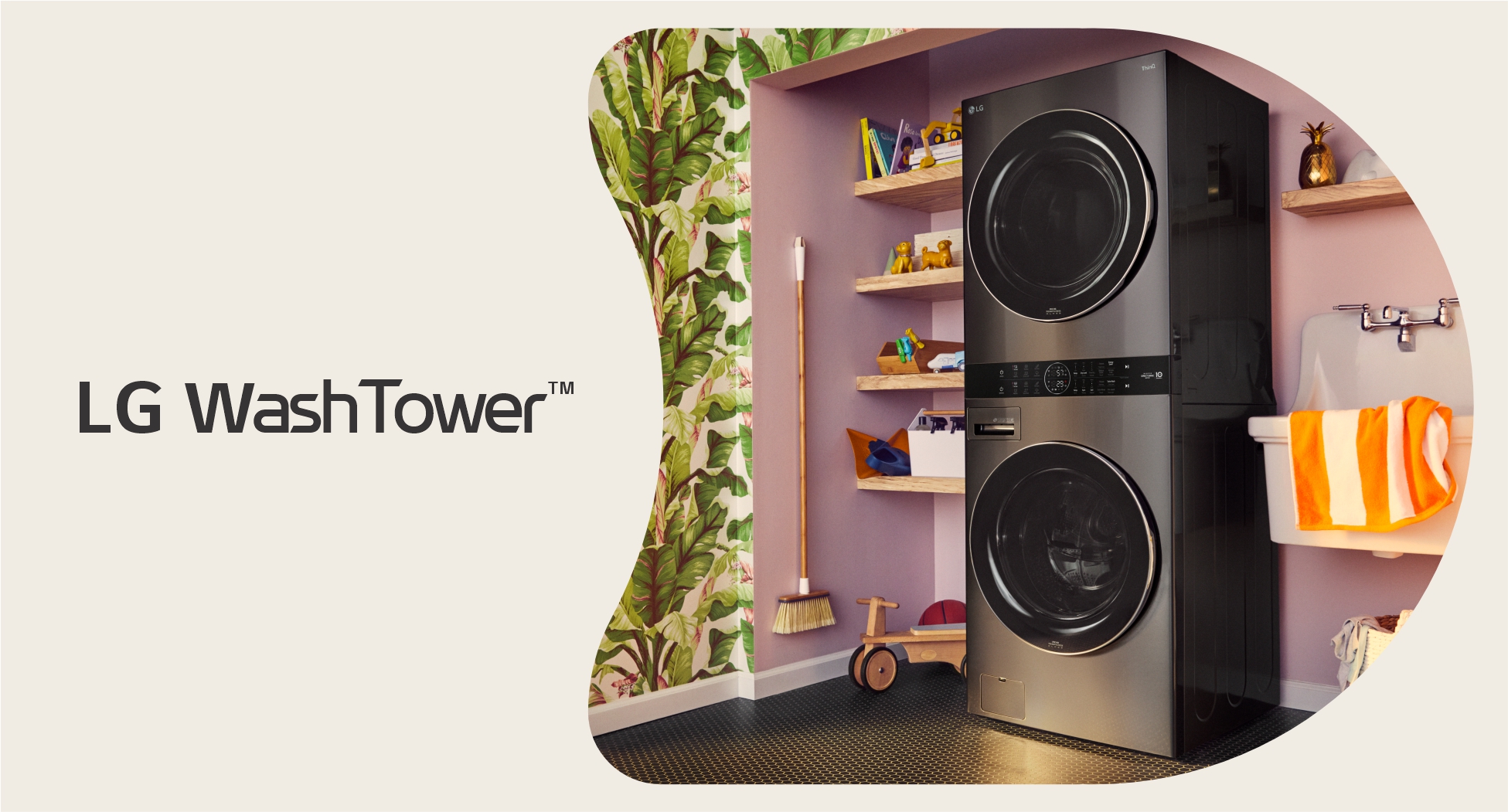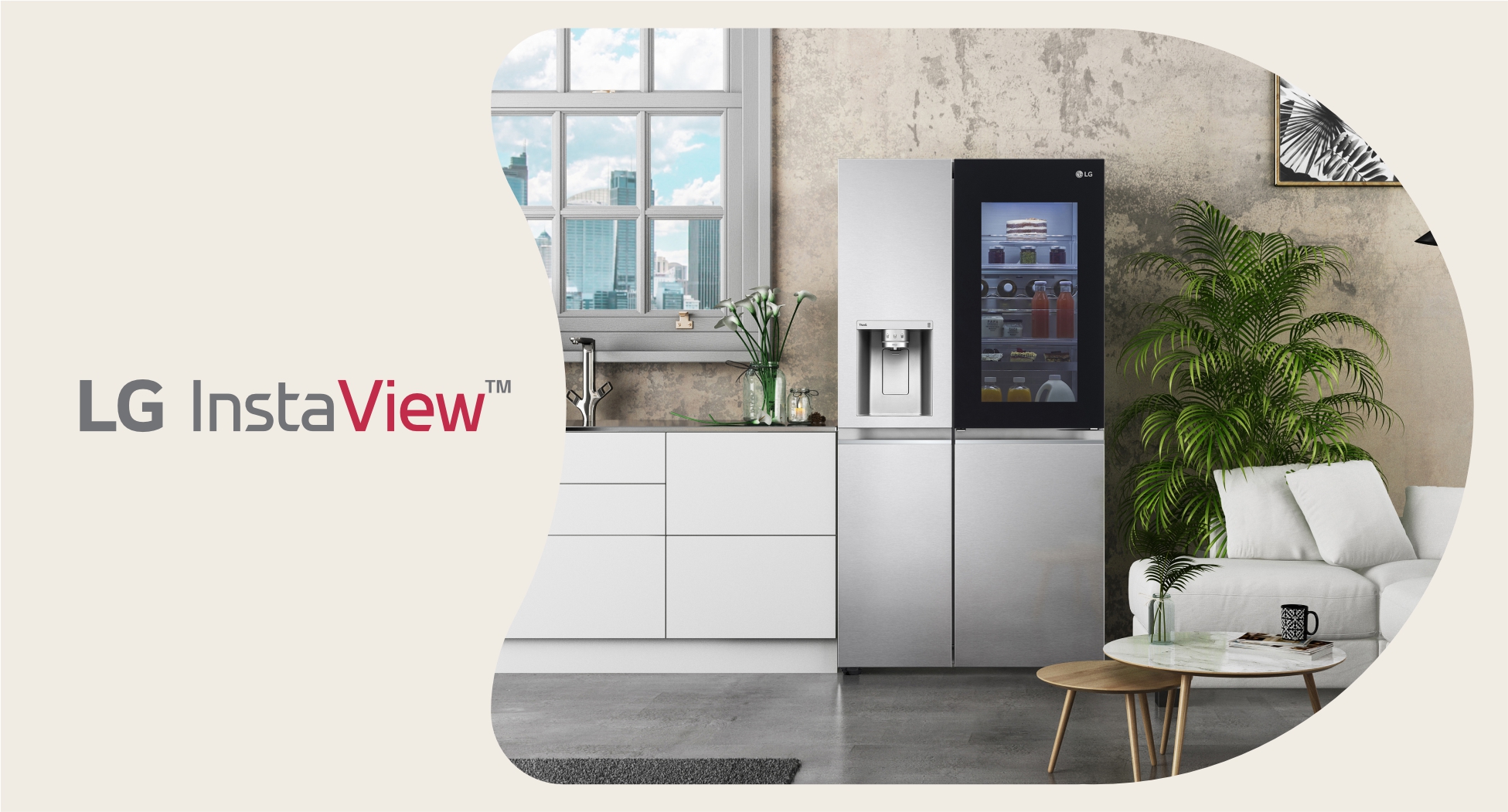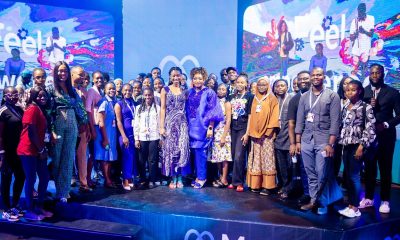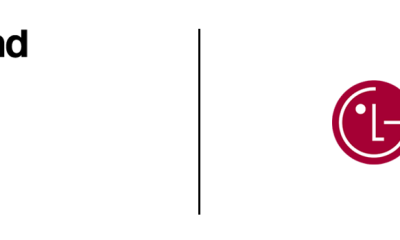Technology
Address Existing Pain Points Instead of Only Providing Digital Alternatives in Financial Services

Jacqueline Jumah, Digital Financial Services Market Specialist and Managing Director at Intermarc Consulting
October 2018
Digital channels can drastically drive presence and scale when offering financial services, opening doors to the unbanked and underserved populations. Financial regulators around the world have realised the tremendous role that digital financial services (DFS) can play for financial inclusion and have sought to unlock this potential by creating evolving enabling environments. Financial inclusion, at its most basic level, starts with having an account (financial institution account or mobile money wallet), but it doesn’t stop there, people can only fully benefit when there is regular usage.
In recent times, we have witnessed incredible innovations in products, and initiatives to support the delivery of financial services, promoting the uptake and usage of products and services and showcasing the business case for financial inclusion. The advent of fintech has also propelled developments in the industry, where solutions have come with alluring ‘convenience’ value propositions, translated to accessibility, immediacy, affordability, security, reliability, among others.However, after closely working with low-income people it is critical to explore how comprehensible the convenience is, in the eyes of customers. The convenience perception is a key influencer in the adoption and regular usage of these solutions by customers. Perhaps, we would understand how to develop better products and services and hence experience higher customer activity rates in DFS.
My experience places me in the contextof the financial behaviour and mindsets of the low-income segment people. They are involved in multiple informal money management activities, which work for them, and which form archetypes to evaluate any new offerings by financial service providers. Reflections on the accounts of Portfolios of the Poor and What do Low-income People Know About Money?is that low income segment people have money management mechanisms that work for them and are content, even when these mechanisms could be improved, as Ignacio Mas exemplified in the Digital simulations to digitising financial access for the poor.
DFS has so far mostly achieved to replicate the traditional offerings provided by conventional institutions and the informal financial services workarounds. Here, ‘sign up with us for your convenience’ is the overarching value proposition by a good number of leading providers and which now seems somewhat imperceptible by this segment.For most providers, the inclusion effort of providing these products and services to the bottom of the pyramid customers has not been effectively considered. Providers are offering products and services in pre-determined three main categories – savings, credit and insurance which have been derived from mainstream or traditional financial services. Think about it!
In order to understand how best to address the existing pain points of typical low-income households, through providing improved digital alternatives, I set out to find typical personas and engaged one couple in Kenya on how they manage finances.
Adhis is a woman in her mid-thirties living in Kibera – a slum area in Nairobi, Kenya. She is married with five children, all of whom are still in primary school. Adhis’ husband,Mr. Obende works as a casual labourer at construction sites in the Langata area in Nairobi, while she runs a chapati (some form of local bread) and porridge business, providing meals to the construction casual labourers. Adhis earns an average revenue of USD 4 per day. Her business is involving, as she has to wake up at 3 am in the morning from Monday to Saturday to cook chapati and porridge for purposes of selling to the construction workers.
The construction site jobs are quite unpredictable, sometimes the workers are dismissed after arriving at the site, citing no work. Both Adhis and her husband are often affected by the irregularity of the construction jobs and are forced to go back home where Adhis sets up a stall to sell the chapati and porridge – experiencing lower returns. Sometimes she never clears her stock,therefore, converts the stock to the family meal of the day.

Adhis stores away some money ranging from USD 0.2 to USD 0.5 every day in an old BlueBand margarine tin in her house, for rainy days. Every Sunday, she visits her “chama” (women savings group) and contributes USD 0.5,where she from time to time borrows money for her upkeep and school fees payment. Unlike Adhis, Mr. Obende prefers borrowing funds from Mr. Otonglo the local money lender even though there are higher repayment interest amounts. On rainy days, he would pledge valuable household items,for example, the radio or Adhis’ Kitenge (african fabric) against some money from Mr. Otonglo ranging from USD 5 to USD 50.
These are basically the couple’s day to day money management mechanisms as they heavily depend on the Mr. Obende’s construction site income, profit from Adhis’ business, savings collected over time from their little BlueBand margarine jar, loans from Adhis’ chama and from the local money lender – Mr. Otonglo. Some key insights into the perceptions and challenges of this household, as regards formal financial services are as follows.
The feeling of discrimination and judgement
People in the low-income segments often want to manage their finances in the most comfortable way possible. They hope to do so without feeling like they would be judged in anyway, and that they will be treated with dignity. They may feel intimidated by the formal structures or even agents who are their neighbours and somewhat know them. In Adhis’ case, she prefers accessing and juggling her money without feeling the need to dress up in her ‘Sunday best’ clothes and shoes, or to remove her usual head gear (old stockings she frequently wears to protect her hair from smoke and roadside dust, as she performs her daily business operations) to go to snazzy looking buildings. She is uncomfortable with prim and proper looks which she feels is for the rich. Adhis compares the immediacy and flexibility value proposition from digital financial services to her experience saving money in the BlueBand jar at home.
While accessing her funds from the jars in the house, she does so discretely and feels that no one would judge how she looks. She also believes there is no judgement when she decides to switch her savings goals or even go against the saving period plan. Adhis admits that although she has an M-Pesa wallet, it is not her preferred financial management medium so she rarely does anything on M-Pesa. This is because she feels she would be opening herself up to the nearby agent, who happens to be a woman, and who she feels may judge her or tell other women about her money usage.
How can providers leverage technology to mimic Adhis’ savings plan and improve on it? How might technology be used to instill confidence in Adhis by creating a perception of privacy when she is depositing or withdrawing funds at the agent location? The answers to these questions would inform some design thinking for financial services propelling innovation and the development of highly usable products and services.
Money in formal systems is not multipurpose
Money in formal systems is deemed not to be as flexible as cash. At any point in time, cash can be exchanged to instantly access goods and or services as opposed to e-value which is not easily accepted. This is because to some extent,at the moment, the focus is on the interconnectivity of systems to promote functionality. Digital channels are more of bridges to money, enabling funds to move from one point to another, with high preference to conduct cash out transactions among customers. The micro level payments ecosystem has not been adequately tapped to enable the likes of Adhis to make payments digitally for their day-to-day needs, hence the perception of money in formal systems being inflexible. Adhis talks of the hurdles in having funds in her M-Pesa wallet when she wants to make payment for the chapati flour or sugar. Her supplier only accepts cash and so this means she has to find an agent to conduct a withdrawal, and at the same time gets charged for the transaction. Withdrawal charges reduce her working capital amounts, discouraging her from holding funds into her M-Pesa wallet. She argues that funds in the M-Pesa wallet are not equal to funds in her purse.
Customers should be able to access their funds whenever there is need. They compare accessing funds from their social groups and other informal borrowing avenues to the formal processes and make decisions basis the ease of access and usage. Flexibility in the availability of funds can be created by driving the acceptance of digital currency. This may be done by providing incentives for electronic transactions and waiving charges in the short-run. In the long run, when e-value is highly acceptable in the low-income segment, minimal charges could be re-introduced.
Perceived confusing, beguiling or hidden conditions pegged to formal financial solutions
The liquidity features commonly known as terms and conditions and other fees for digital financial solutions are not clear and, in many cases, not known to many households. During customer registration to digital financial services, very little information on product features is passed on to customers leading to low trust levels to formal systems. Adhis does not fully trust bank accounts or mobile wallets because she feels that she does not have adequate information regarding operating the said accounts. She reported that she is also not clear on the funds transfer pricing structure and is therefore scared of getting charged hence prefers to keep her money in the house, where she can access the money for free. She also expressed that the fees fluctuate without notice to her and that she would only realize the change upon sending funds. Despite there being measures to help in price transparency in Kenya, awareness among users is still low.
There is need for the introduction of product features that give users a sense of control over when they need the go ahead to sign up for solutions, when they want friction – not to sign up or even how best they could use the solutions. A situation where products are driven by real use cases.By so doing the perception around these solutions, their uptake and eventual regular usage would improve.
The friction in this case is critical too as it empowers users to think of the consequences, plan and make choices on the basis of how these solutions would address their daily pain points. For example, digital credit solutions are exuding a myriad of challenges mostly because the providers have focused in making them readily available and not to address real problems among users. If well considered and structured, digital credit solutions can promote financial inclusion, dignity of users and poverty alleviation. Could providers introduce digital credit solutions that mimic traditional hire purchase arrangements for both goods and services? Asset financing? Instead of easily issuing funds to users, could they identify the need for these funds and create customized impact-oriented credit solutions? Maybe, as an industry, we need the doctor and patient perspective where every patient’s symptoms and treatment prescriptions are treated as unique. Here, users’ pain points would be uniquely addressed.
Saving in formal systems is deemed inoperative
The low-income segments deem formal savings as for those with surplus money. The people in this niche want to see their money working for them or to engage in animating money. Adhis prefers belonging to a savings and credit group to “help others” with the money as she feels this is a wiser way of managing finances and that she will in turn access loans whenever she is in need. She also prefers storing her money in the house to cater for the unanticipated payment for security whenever the vigilante groups from neighbourhood groups knock at her door. Basically, funds saved in formal financial systems are regarded as idle funds.
Providers may pitch savings products as futuristic payment solutions. Such that these products would be perceived as developmental milestones towards future payments. There are already a number of goal-oriented savings products across markets, maybe some repackaging and messaging customization can improve user perception and ultimately regular usage. This way they would seem favourable and aligned to working for the users to achieve their future payment needs.
Conclusion
My interactions with this family shed some light on some of the true perceptions and challenges they face in embracing formal financial services. It is not just about providing digital alternatives; the digital solutions would be meaningful if they are perceived as superior to informal alternatives. Understanding these perceptions and challenges will go a long way in generating daily relevant financial solutions to the low-income segments, those that seem to be better than existing alternatives to encourage regular usage. Some offerings that might seem obvious to other segments seemed imperceptible to this household. Quite some room to improve today’s solutions!
Author: Jacqueline Jumah
Digital Financial Services Market Specialist and Managing Director at Intermarc Consulting
Technology
LG’s Brand Reinvention: A Global Success Story

LG Electronics (LG) has made significant strides in the global market with its innovative brand strategies, earning its place as a top global brand.
On October 10, LG was ranked 97th with a brand value of approximately USD 6.5 billion in the Best Global Brands 2024 report by global brand consulting firm Interbrand.
Interbrand’s evaluation of the Best Global Brands assesses brand value through a comprehensive analysis of a company’s financial performance, role of brand and brand strength. Factors such as direction, engagement and relevance are considered. As a pioneer in the industry, Interbrand’s ISO-certified evaluation criteria are widely regarded as the most reliable methodology in branding and marketing.
LG’s brand value has surged, reflecting significant improvements in both business and brand competitiveness compared to the previous year. LG’s brand value increased by a substantial 38.7 percent year-over-year, receiving high scores in the categories of role of brand and brand strength.
Interbrand attributes this positive assessment to LG’s clear vision as a Smart Life Solution Company and its sustained growth through the exploration of new opportunities. The company has also adapted its brand strategies to ensure consistent customer engagement across diverse regions and generations, utilizing communication methods that resonate with audiences both online and offline.
In July of last year, LG unveiled its vision to evolve into a “Smart Life Solution Company,” enhancing customer experiences across various environments, including homes, commercial spaces, mobility and virtual realms. Since embarking on its transformation, LG’s brand value has skyrocketed. From approximately USD 3.1 billion in 2022, it has more than doubled to about USD 6.5 billion in 2024.
Interbrand has also praised LG’s “Brand Reinvent” initiative, which aims to establish LG as a youthful and dynamic brand that resonates with customers across generations and regions.
To achieve this, LG has unified its brand message under the brand promise of “Life’s Good,” ensuring it is embraced by all organizations globally and integrated into every customer touch point of brand experience. This includes redefining its brand identity and visual expression. “Life’s Good” encapsulates the brand’s mission to help everyone savor life’s precious moments through its products, services and communications. In the digital realm, the brand symbol “Face of the Future” engages customers with a friendly smile and wink, fostering a sense of connection through various digital expressions.
In addition, LG is launching brand campaigns and pop-up events that invite future customers, particularly Generation Z, to engage both online and offline.
The global campaign “Optimism your feed” aims to spread positivity through online algorithms, encouraging a better life with an optimistic outlook. This initiative garnered significant attention, amassing over 1.8 billion views within two months of its launch on platforms like YouTube and TikTok.
Moreover, LG is going to keep enhancing its engagement with Generation Z by creating offline customer experience spaces that reflect young customers’ interests, such as lifestyle, games and music.
LG has previously been recognized as one of the top 100 global brands for three consecutive years from 2005 to 2007.
“We are transforming from a leading home appliance and consumer electronics company into a Smart Life Solution Company. As part of this transformation, we’ve initiated our brand reinvention based on our long-standing promise, ‘Life’s Good,'” said William Cho, CEO of LG Electronics. “At this historical moment of business transformation, we are proud to be recognized as one of the top 100 global brands, a testament to our strong brand presence and growth potential.”
Technology
LG WashTower: A high-performance, space-saving laundry solution designed for today’s urban households

As global demand grows for sustainable living, energy efficiency, and minimalist design, companies are reshaping their product offerings to stay competitive and meet consumer expectations. At the forefront of this shift in the home appliance market is LG Electronics with its cutting-edge WashTower – a high-performance, space-saving laundry solution designed for today’s urban households.
Boasting advanced features, large capacities, and innovative technology, the WashTower is more than just a washer-dryer combo – it’s a game changer for those seeking efficiency, smart connectivity, and excellent cleaning performance.
Ideal for compact spaces, the LG WashTower’s slim, vertical design fits seamlessly into small laundry rooms or closets without sacrificing performance. Standing at 1655mm tall and 600mm wide, it offers ample capacity—13kg in the washer and 10kg in the dryer – perfect for large loads like bedding or towels, all while saving valuable floor space.
The 2024 LG WashTower™ is a revolutionary solution that aligns perfectly with Nigeria’s vision for modern, sustainable living,” said Oktae Kim, Product Director, Home Appliance Division, LG Electronics Nigeria. “Its space-saving design and advanced features cater to the unique needs of our customers in the country, setting a new benchmark for laundry care.”
Unlike traditional stacked units with controls in hard-to-reach places, the LG WashTower™ introduces an all-in-one control panel designed to simplify laundry care. With the TurboWash 360, DUAL Inverter Heat Pump™ Dryer, Auto Cleaning Condenser, and LG ThinQ™ connectivity, the WashTower™ enhances functionality and convenience, meeting the demands of modern, fast-paced lifestyles.
Some of its most impressive features include:
Built-in Intelligence Takes Out the Guesswork
When it comes to doing laundry, one out of two consumers default to the Normal Cycle on their washers and dryers because they simply don’t know which to choose. LG WashTower takes out the guesswork with built-in intelligence that uses sensors to detect fabric texture and load size, and then automatically selects the right wash motions, temperatures, and more for precision fabric care.
And it gets smarter: WashTower will even learn your preferred settings. Simply activate Smart Learner in the LG ThinQ® app, and it will remember your ideal wash temperature, spin speed, or dry level. With Smart Pairing™, the washer can even tell the dryer the right compatible drying cycle, making LG WashTower the ultimate laundry hack.
Help Remove Allergens in Fabrics
LG washers are the industry’s first to be CERTIFIED asthma & allergy friendly® by the Asthma and Allergy Foundation of America. The Allergens™ wash cycle goes beyond everyday cleaning, using the gentle power of steam to remove common household allergens in fabrics by more than 95 percent. In addition, LG TurboSteam™ technology in the dryer helps sanitize and refresh clothes in between washes as well as children’s toys, decorative pillows and more.
Exceptional Cleaning and Drying Performance
With steam function in the washer and heat pump in the dryer, the WashTower effectively sanitizes clothes and removes wrinkles, which is a boon for those with allergies or sensitive skin. Its durable, never-rust stainless steel drum ensures long-lasting reliability, and the absence of an agitator means it’s gentle on delicate fabrics. The dryer starts to preheat before the end of washing, so drying takes less time. With the Dual Inverter Heat Pump™, an energy-saving way to dry, the dual cylinders allow for faster drying and energy saving.
Laundry Made Better – for You and the Planet
Designed with energy efficiency in mind, the LG WashTower includes energy monitoring capabilities, helping consumers save money while helping the planet. ENERGY STAR certified washers and dryers use 25 percent less energy and 33 percent less water than traditional models.
Verdict: A Smart, Stylish Choice
The LG WashTower stands as a top contender in the world of washer-dryer combos, offering a perfect blend of technology, performance, and space-saving design. With no drawbacks, the WashTower’s overall functionality, energy efficiency, and convenience make it a strong choice for families and individuals alike.
If you’re looking for a washer-dryer combo that combines smart technology with stylish design, the LG Wash Tower is a reliable, high-performing option.
The LG WashTower™ strengthens LG’s position as a leading innovator in the home appliance sector. With its cutting-edge technology and user-friendly interface demonstrates LG’s dedication to shaping the future of home appliances. It’s more than just a product – it’s a testament to LG’s vision of bringing convenience, efficiency, and sustainability into every home.
For more information or to purchase the LG WashTower, visit https://www.lg.com/africa/washing-machines/lg-wt1310rh
Technology
LG InstaView Refrigerator built to deliver Freshness, Hygiene, and Health

The launch of the LG InstaView refrigerator introduced a new era in home refrigeration, combining advanced technology, exceptional energy efficiency, and unmatched convenience to transform how households interact with their appliances. The LG InstaView Door-in-Door™ Refrigerator does more than just keep food fresh. It’s a perfect mix of modern technology and everyday usefulness, taking cooking to a whole new level of sophistication and ease.
“At the core of the LG InstaView Refrigerator is the Inverter Linear Compressor, a ground-breaking technology that delivers remarkable energy efficiency,” says Oktae Kim, Product Director, Home Appliance Division, LG Electronics Nigeria. By adapting its cooling power to the refrigerator’s needs, this compressor minimizes power consumption, helping reduce energy bills while also contributing to a quieter kitchen. For long-term peace of mind, LG offers a 10-year warranty on the compressor, reinforcing its durability and reliability.
“One of the standout features of this fridge is the InstaView Door-in-Door™ technology. With just two knocks on the sleek glass panel, you can see inside the fridge without opening the door, helping preserve cold air and keeping your food fresher for longer. This not only adds a touch of modern elegance but also helps reduce energy consumption by limiting unnecessary door openings” he noted.
Some other key features in the LG InstaView Door-in-Door™ Refrigerator include;
A New Level of Convenience: Door-in-Door™ Access
The Door-in-Door™ compartment offers even greater convenience by allowing easy access to frequently used items like drinks and snacks. Instead of rummaging through the entire fridge, you can grab your essentials quickly and effortlessly. This feature also limits cold air loss, making it both a time-saver and an energy-efficient solution for busy households.
Purified Hydration: UVnano® Water Dispenser
Staying hydrated has never been more convenient or hygienic. The UVnano® water dispenser uses UV light to eliminate up to 99.999% of bacteria from the water outlet, ensuring that every sip is clean and safe. The self-cleaning cycle can be activated automatically or manually, making this feature both functional and reassuring for users who prioritize health.
Hygiene Fresh+™: A Breath of Fresh Air
Maintaining an odour-free refrigerator has never been easier thanks to Hygiene Fresh+™ technology. This system actively removes bacteria and unpleasant smells, circulating clean air throughout the fridge. With a 99.999% bacteria removal rate, your food remains fresh and healthy, while the built-in deodorization feature ensures that strong odour, like leftovers, never linger.
Even Cooling Every Time: DoorCooling+™ Technology
No more worrying about uneven cooling inside your fridge. The DoorCooling+™ feature ensures that every inch of the refrigerator is consistently cooled by placing air vents at the front of the appliance. This technology helps food stay fresh and evenly chilled, even in the door compartments, enhancing the quality and shelf life of your groceries.
Smart Control with ThinQ™ Technology
In the age of smart homes, LG takes convenience one step further with ThinQ™ technology. This feature allows users to control and monitor the refrigerator from their smartphones, whether at home or on the go. With just a few taps, you can adjust the temperature, activate Hygiene Fresh+™, or even diagnose potential issues, making maintenance and operation effortless.
Proven Benefits: Energy Savings, Convenience, and Hygiene
When it comes to pros, the LG InstaView Refrigerator excels in several areas. Its energy efficiency through the Smart Inverter Compressor and InstaView technology helps reduce environmental impact while cutting down on household energy bills. The convenience provided by the Door-in-Door™ feature, combined with the peace of mind from UVnano® and Hygiene Fresh+™ technologies, ensures that families have access to fresh, clean, and organized food storage.
Verdict
The LG InstaView refrigerator is a perfect blend of advanced technology, innovative design, and health-conscious features. From linear cooling that keeps food fresh to the Hygiene Fresh+ filtration system that ensures a clean storage environment, this fridge has everything you need for modern food preservation. Add to that the convenience of the Knock-Knock feature and the health benefits of UVnano, you have a refrigerator that truly stands out.
If you’re looking for a premium appliance that delivers freshness, hygiene, and style, the LG InstaView refrigerator is a worthy investment.
The LG InstaView Door-in-Door™ Refrigerator is available across Fouani showrooms and Dealer stores Nationwide. It’s a must-have for modern kitchens thanks to its many useful features.
For more information about the LG InstaView Refrigerator, visit https://www.lg.com/africa/instaview-door-in-door-refrigerators
-

 Afripreneur18 hours ago
Afripreneur18 hours agoRedefining Real Estate Marketing: An Interview with Imelda Usoro Olaoye, Founder of Thinkmint
-

 Afripreneur17 hours ago
Afripreneur17 hours agoOluchi Anoruo on building SmartPharm and addressing access to healthcare products
-

 Economy22 hours ago
Economy22 hours agoMeta Hosts its First Youth Summit in Nigeria to Drive Innovation and Empowerment
-

 Technology23 hours ago
Technology23 hours agoLG’s Brand Reinvention: A Global Success Story

















